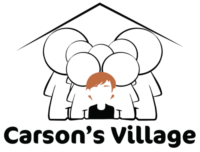Do you believe…
“Mourning is the same as grieving”
“There are orderly, predictable stages to grief”
“The goal of grief is to move away from it, not toward it”
Common myths can keep us from supporting one another, or ourselves in grief. Does it matter that grief (bereavement) is not the same as mourning?
Alan Wolfelt, grief therapist and educator, explains, “Bereavement is the state of being torn apart.” Mourning is the part we show on the outside. If we don’t see mourning, we tend to think the grieving is “done.” Likewise, when we don’t see certain reactions in ourselves, we may think our grief is over because the crying has stopped.
The myth that grief progresses in predictable and orderly stages can cause confusion when you feel yourself go one step forward and two steps back. Grief and reactions you thought were behind you can be triggered by a variety of cues – celebrations and family times, as well as a variety of sights, sounds, and smells that have meaning for you.
The myth that “tears are a sign of weakness” is common in Western society.
We quickly pick up that people are uncomfortable with the exhibition of tears, so we are quick to apologize for them. We often hear, “I didn’t mean to make you cry.” In reality, crying can help decrease stress-related disorders.
The myth that the goal of grief is to move away from it, rather than toward it can increase your sense of isolation. It is the process of moving towards the pain that brings us relief and eventual healing. The goal of grief is not to “get over” it as soon as possible. The goal is to reach a point of reconciliation – the place where you can integrate the realities of moving into a new life without the presence of the person who died.
Another reality that upsets our notions about loss is timing. When someone dies “before their time” – and leaves behind young children and widows or widowers, family and friends frequently have their own “timeframe” for getting through grief and on to the next relationship. A young woman I visited with, a widow of 8 months, described to me a situation where she struggled to tell her boss to stop setting her up with blind dates. On the other end of the spectrum was a widow who told me her “friends” no longer called or included her now that she was single. This, along with parenting can become overwhelming for young widows, and bittersweet, with the knowledge there are many milestones children will not share with the parent who has died.
Popular award-winning author Carol Brody Fleet, (“Widows Wear Stilettos”) says, “Widowhood is a life nobody signs up for. It’s not what you’re thinking about on the day you’re wearing that big white dress… the image we have of widows is changing, especially for women married to soldiers who died in Afghanistan or Iraq. Unlike older women, younger women don’t have a lot of friends who are widowed.”
She started www.widowswearstilettos.com to support mourners, especially younger widows, where she shares helpful advice including, “Take care of yourself because it’s one thing you can control in a life where control was taken out of your hands.” Her advice to all is to take advantage of the bereavement support available to you through hospice and some funeral homes.
Not accepting the myths is another thing you can do. Grief is a journey of healing that you don’t have to take in isolation. Please join us at a variety of support groups where you can share your story and know that you are not alone.
-Alan Wolfelt, PhD
